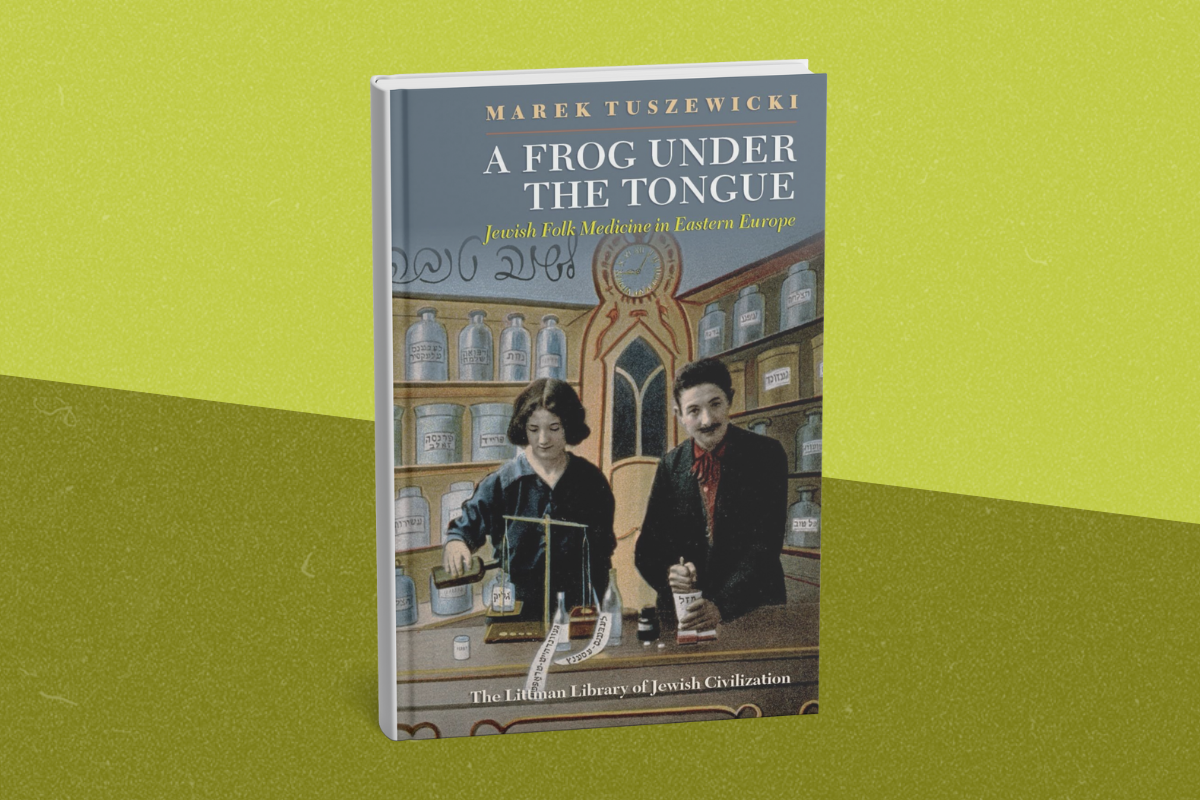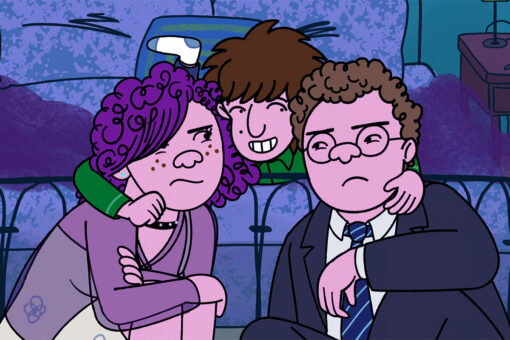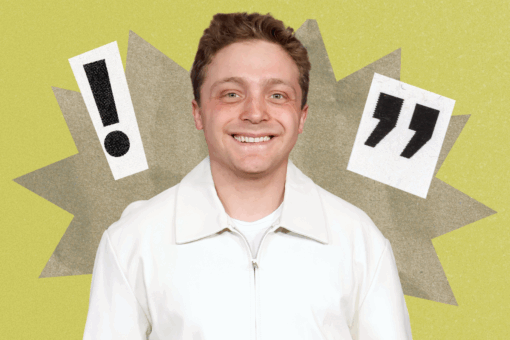Over the past few years, as a Jewish writer and sensitivity reader, I’ve gotten more interested in the nuances of Jewish culture that aren’t commonly discussed in the day-to-day spectrum of Jewish media. Among such topics include Jewish folk medicine, which I’ve previously touched on while reading “Ashkenazi Herbalism: Rediscovering the Herbal Traditions of Eastern European Jews” by Adam Siegel and Deatra Cohen, which touched on exactly what its title describes as well as opsrhprekherin, a type of Jewish folk-healer/magic worker. Since then, I’ve been fascinated by the idea and history of a Jewish practice that blurs the line between medicine and magic, which is exactly what I found when I came across the book, “A Frog Under the Tongue: Jewish Folk Medicine in Eastern Europe” by Marek Tuszewicki.
Marek Tuszewicki is an associate professor of Jewish history and culture at the Institute of Jewish Studies, Jagiellonian University in Krakow (Poland). When they are not teaching students, they spend most of my time in libraries and archives researching the history of the diaspora in Eastern Europe during the turbulent modernization period of the 19th and 20th centuries. They are also a translator, editor and organizer of cultural events.
This interview has been lightly edited and condensed for clarity.
Hello! What can you tell us about your book, “A Frog Under the Tongue: Jewish Folk Medicine in Eastern Europe”?
“A Frog Under the Tongue” is a story about the medical culture of Ashkenazi Jews during the transition between two fundamental healing traditions. On the one hand, we have so-called folk medicine, which consists of beliefs and practices often rooted either in Greco-Roman medicine or in speculations about the supernatural world, and on the other hand, we have biomedicine, i.e. systematic practices based on the experiences of biology, biochemistry, physics, and so on. As history has shown, within a few generations, modern societies have “forgotten” the old medical ways, handing over control over medicine to its trained adepts and even creating extensive control mechanisms that prevent the functioning of practices outside biomedicine. These steps led to a genuine social revolution, significantly prolonged human life and helped to combat many cruel diseases. At the same time, however, they also distorted the image of the past and placed a large part of ancient culture under the label of ‘superstition’ (which it never was). In my book, I try to show this tradition as a living phenomenon that was also driven by interreligious and interethnic contacts.
As a scholar, what drew you to the subject of folk medicine of Ashkenazi Jews?
My interest in folk medicine arose through the study of Hasidism. I belong to the generation of researchers of Jewish history for whom Hasidism was an extremely attractive subject. Thanks to intensive academic contacts between my university and Israel, the United States and Europe, it was possible to meet and learn from the most important scholars of the time.
Studying Hasidic stories and collections of customs, I was fascinated by the clear presence of health issues in the sources. I wanted to learn more about this apparent paradox: how the traditionalist circles of the Jewish community could, at the same time, be so open to new medical trends. This, in turn, was related to the main topic of my later research: the coexistence of different, sometimes contradictory, medical theories in late 19th and early 20th century Jewish culture.
As one reads this book, there’s a sense of Ashkenazi folk medicine blurring the lines between religion, magic and science. How would you personally describe it?
In every culture there is a separation between the natural and the magical, as otherwise it would be difficult to attribute special powers to the latter. Thus, the first folklorists could easily get the impression that the medical practices of the “folk” (people) fit into separate tables, and that it may be possible to find traditional practical knowledge useful in the modern world.
However, if we are aware of the existence of different concepts and categories within the ancient culture, we must at the same time consider it as a complex system. In this system, there are connections: herbs as remedies are natural, but the circumstances of their gathering (at a crossroads during a full moon) or their preparation (boiling in so-called “still water” and accompanied by magical incantations) are quite different.
When we look at magical texts themselves, we can easily recognize in them a dependence on religious beliefs (biblical narratives) as well as some formulations that point to ancient views on the nature of the world (the four elements, a very rationalistic theory). In the 19th century, however, all this was overlaid by new currents, both biomedical and alternative (homeopathy). The spectrum of possibilities expands, and sick people are eager to benefit from it.
One of the topics touched on in your book was the subjects of opshprekherin (folk-healers). Can you speak more on the nature of their profession and their roles in the wider Jewish community?
There were a number of healers in almost every town in Eastern Europe. Some of them used the skills typical of their profession: Shoemakers cut off warts, blacksmiths pulled teeth, tailors sewed up wounds and so on. For problems such as sand in the eye, there were specialists who would willingly lick the eye of a suffering person, even free of charge.
But in every town there were also people who used to deal with illnesses that were supposed to be caused by witchcraft or charm. An “opshprekherin” was a woman who could ward off the “evil eye” (opshprekhn, in Yiddish), but her expertise also included a kind of “anti-demonic” diagnosis or prevention. People asked her about things related to the “evil eye” and held her in high esteem. Those magical healers were often ordinary people: a shopkeeper, a coachman, a person who worked in the bathhouse, sometimes just a neighbor or a family member, members of the Jewish community of both sexes. Alongside them lived quacks, whose help was no less readily called upon, albeit mostly in “more difficult cases.” And since this rich catalog had existed for many generations, it was considered to be in harmony with the nature of the world.
Another topic that gets talked about in the book is the role of patient agency when interacting with healers. I’d love to hear more about that.
Today, sick people are almost completely reliant on the knowledge and abilities of medical professionals, but this was not always the case. A patient-centered treatment process was a characteristic feature of ancient medicine. Until as late as the 18th century, European doctors relied on the opinions of sick people not only to assess the symptoms of a disease, but also to provide clues as to its nature or remedies.
Medical folklore preserved this model, which caused some friction between the families of the sick and the doctors. This was particularly typical in the case of minorities, such as Jews, as they feared a negative impact on the traditionally established family authority.
Could you expand on the sense of patient affirmation and use of Yiddish?
If the patient’s opinion is no less important than the doctor’s, then one should listen particularly carefully to what the patient has to say. And since most Jewish patients spoke Yiddish, they had the best contact with doctors who spoke this language.
Within the book there seems to be a distinction made between folk-healers and “witches/sorcerers” in the broader Ashkenazi Jewish communities of the past, i.e. between taboo magic and more acceptable forms. How would you describe the differences or possible similarities between those categorizations?
The distinction between healers and witches usually ran along the boundary between the familiar and the strange. The former were members of the same community: family, ethnic or religious group, social estate, etc. Their actions had a certain value of legitimacy, even if they went beyond the norms accepted within this group.
Witches (or sorcerers), on the other hand, were usually perceived as strangers. For Christian peasants, a stranger would be a Jew, even if he lived in a nearby tavern and always offered booze, credit or good advice. Jews, on the other hand, saw sorcerers in old peasant women, in Romani horse traders and above all in the aristocracy and the Christian clergy.
Taboos are an important element of social control, but they serve both to limit contact and to define exceptions. Thus, we find numerous exceptions when alien sorcerers came to the aid of the Jews, at the request of the latter.
An important note you made in the book was on some of the limitations/biases in folk medicine ideas, such as linking mental health issues to sin/demonic possession. Could you expand on that?
Even ancient medicine made a clear distinction between physical and mental illnesses and recommended different treatments for each. Since the actual causes of mental illnesses were unknown [during the time period I was focused on in my research,] they were easily associated with defects of the soul: sin, the influence of an impure force, etc.
These views depended on the popular interpretation of the prevailing theology in a particular group. For example, Jewish people had a different understanding of possession than Catholics or Orthodox Christians. And they also used their own methods of dealing with sin or driving out the demon.
While much of “A Frog Under the Tongue: Jewish Folk Medicine in Eastern Europe” relates to the past, how do you think we can carry some of the lessons and wisdom from that time into the present amongst our Jewish communities??
My book touches on a number of issues that are relevant for today [and] the future. It can be understood as a voice against the various recurring hypothesis about the Turkic/Khazar origins of Ashkenazi Jews. Rather, it is evidence of the close connection between the Jewish culture of Eastern Europe and the cultures of the Germanic and Slavic environment. In this social landscape, the Jews were an independent group that was in constant contact with their homeland in the Land of Israel, but by no means closed to mutual influence with peoples around it.
The role of women in ancient medical culture also seems to me to be an extremely important aspect of my book. Traces of this role in folklore have remained very clear into the 20th century. This may not come as a surprise, because as we think of basic medical care, it was almost exclusively in the hands of mothers, grandmothers or female neighbors. In the meantime, it was an area of human activity that was in many ways ignored, rarely recorded and little appreciated by contemporaries and subsequent generations. It is definitely worth revisiting and trying to finally discover it.
What’s a question you haven’t been asked yet about your field of research?
The subject of folk medicine fascinates readers, so I have already been asked many different questions. Some of these have been about specific treatments or remedies for specific illnesses. However, my book is not a guidebook showing ways to use ancient knowledge as a complement to biomedicine. I would find such a conduct very risky.
On the other hand, it is always a pleasure to talk about the tensions created by the coexistence of many opposing views on etiologies and therapies in 19th century society. This seems particularly relevant to me today as countless unproven treatments are advertised over the internet. It is worth asking what makes societies seek advice outside biomedicine, even though they owe so much to it.



